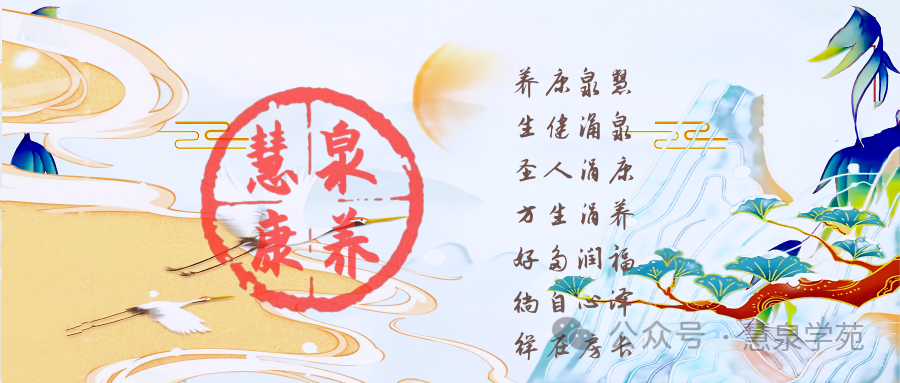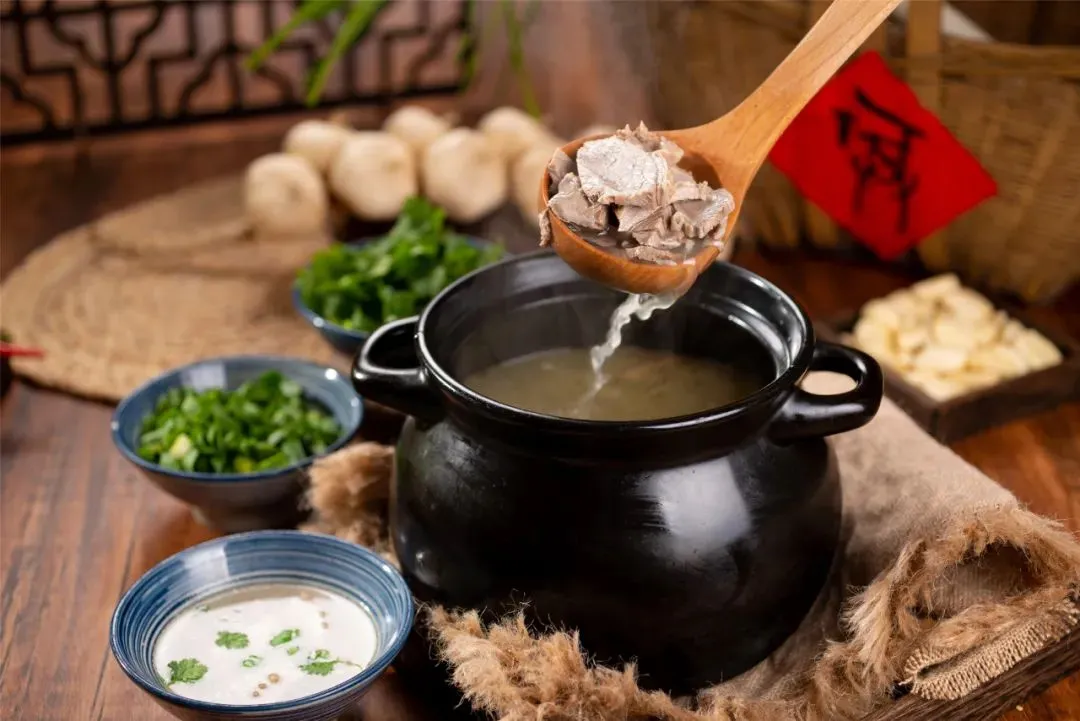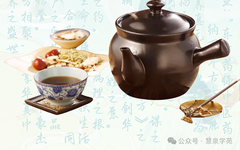
Introduction
Medicinal cuisine originates from China’s traditional dietary and TCM (Traditional Chinese Medicine) therapeutic culture. It is a delicious food made by strictly following medicinal cuisine recipes, combining Chinese herbs with certain food items that have medicinal value, and using unique Chinese cooking techniques to create dishes with specific colors, aromas, flavors, and forms. (In short, medicinal cuisine is gourmet food made by pairing medicinal materials with ingredients.) It is a product of the combination of traditional medical knowledge and culinary experience in China. It embodies the concept of “medicine in food,” where medicine is treated as food, and food is endowed with medicinal properties. The two complement each other, enhancing each other’s effects; it possesses high nutritional value and can prevent and treat diseases, promote health, and prolong life.


Origins of Medicinal Cuisine
For thousands of years, traditional Chinese medicine has placed great importance on the relationship between dietary regulation and health longevity. This includes dietary therapy, which uses food to achieve health maintenance and disease prevention, as well as medicinal cuisine, which combines food and medicine to create meals that promote health and treat diseases. The medicinal cuisine mentioned in this article includes elements of dietary therapy. The two complement each other, enhancing each other’s effects.

Human ancestors had to forage for food in nature for survival. Over time, they discovered that certain animals and plants could not only satisfy hunger but also had medicinal value. In the primitive stage of human society, people did not have the ability to separate food from medicine. This phenomenon of combining food and medicine formed the source and prototype of medicinal cuisine. Perhaps it is based on this situation that traditional Chinese medicine states that “food and medicine share the same source.”
Modern archaeologists have discovered many medicinal foods from primitive times, and modern ethnology has found that some primitive tribes still make foods with medicinal effects. These findings prove that medicinal cuisine can indeed be traced back to the primitive era of humanity. However, this primitive form of medicinal cuisine cannot be considered true medicinal cuisine, as people at that time were not consciously utilizing the medicinal properties of food. True medicinal cuisine could only emerge in a civilized era when humans had accumulated rich knowledge of medicine and cooking experience. So when did true medicinal cuisine originate in China, and how did it develop and evolve? After the emergence of written language in China, the characters for “medicine” and “cuisine” appeared in oracle bone inscriptions and bronze inscriptions.
The term “medicinal cuisine” first appeared in the “Book of the Later Han: Biographies of Women,” which includes the phrase “the mother adjusted the medicinal cuisine with deep feelings.” The “History of Song: Biography of Zhang Guan” also records “early rising to serve medicinal cuisine.” These records prove that at least over a thousand years ago, medicinal cuisine had already appeared in China. Before the term “medicinal cuisine” emerged, ancient Chinese texts had already documented the preparation and application of medicinal cuisine.
The “Mencius” states: “Food and color are human nature,” indicating the instinct of humanity.
The saying “people regard food as heaven” emphasizes the importance of “filling the stomach” for survival and reproduction to maintain bodily metabolism.
The “Han Feizi: Five Pests” mentions: “In ancient times… people ate fruits, vegetables, and shellfish, which had foul odors and harmed the stomach, leading to many diseases.”
The “Huainanzi: On Cultivation” also states: “In ancient times, people ate grass and drank water, foraged for tree fruits, and consumed the meat of small animals, often suffering from diseases caused by harmful diets.” This illustrates that the ancestors in ancient times indeed suffered from diseases caused by harmful diets.
Medicinal Cuisine Recipes
【Dish Name】 Bai Ji Bing Tang Yan Wo (White Atractylodes and Rock Sugar Bird’s Nest)
【Characteristics】 Nourishes the lungs and nourishes yin, stops cough and bleeding. Suitable for hemoptysis due to pulmonary tuberculosis, chronic bronchitis in the elderly, emphysema, and asthma.
【Ingredients】 10g bird’s nest, 15g Bai Ji (White Atractylodes).
【Source】 Folk recipe
【Preparation Process】 Prepare the bird’s nest as per the eating method, place it in a clay pot with Bai Ji, add an appropriate amount of water, and steam in a water bath until very soft. Strain out the residue, add an appropriate amount of rock sugar, and steam for a while to complete.
【Dosage】 Take 1-2 times daily.
【Dish Name】 Bai Yang Shen Geng (White Lamb Kidney Soup)
【Cuisine Type】 Zhejiang Cuisine
【Characteristics】 Strengthens the kidneys and warms the spleen and stomach. Suitable for kidney deficiency with declining yang (impotence), weakness in the waist and knees, spleen deficiency with poor appetite, and cold stomach pain.
【Ingredients】 50g Rou Cong Rong (Cistanche), 10g Bi Ba (Cubeb), 10g Qing Guo (Green Fruit), 5g Chen Pi (Dried Tangerine Peel), 10g Pepper, 2 pairs of white lamb kidneys, 200g lamb fat, salt, scallions, soy sauce, yeast, ginger in appropriate amounts.
【Preparation Process】 1. Clean the white lamb kidneys and lamb fat; 2. Place Rou Cong Rong, Chen Pi, Bi Ba, grass fruit, and pepper in a cloth bag, tie it up, and put it in an aluminum pot with the white lamb kidneys and lamb fat, adding appropriate water; 3. Place the aluminum pot on the stove, boil over high heat, then simmer on low heat until the lamb kidneys are fully cooked, add scallions, ginger, yeast, and soy sauce, and prepare the soup as usual.
【Dosage】 Eat the lamb kidneys and drink the soup.
【Dish Name】 Bai He Hong Zao Zhou (Lily and Red Date Porridge)【Characteristics】 This porridge is especially suitable for female friends. Glutinous rice is sweet and neutral, can tonify qi and stop sweating; lily is sweet and slightly cold.
【Ingredients】 30g glutinous rice, 9g lily, 10 red dates, appropriate amount of white sugar.
【Preparation Process】 1. First soak the lily in boiling water to remove some bitterness; 2. Wash the glutinous rice, and cook it with the lily and red dates over low heat until it becomes porridge, adding an appropriate amount of white sugar to complete.
【Dish Name】 Bai He Zao Gui Tang (Lily and Date Turtle Soup)【Characteristics】 Function: Nourishes yin and blood, benefits the heart and kidneys, and supplements the lungs. Suitable for insomnia, irritability, and palpitations caused by heart and kidney yin deficiency.【Ingredients】 Main ingredient: 60g turtle meat. Accompanying ingredients: 30g lily, 10 red dates. Seasoning: appropriate amount of salt.【Preparation Process】 ① Clean and cut the turtle meat and lily into pieces. Remove the pits from the dates and wash them. ② Place 1500g of water in a pot, add the turtle meat, lily, and dates, bring to a boil, skim off the foam, then simmer on low heat, adding a little salt until the turtle meat is cooked.【Dish Name】 Bai He Zhou (Lily Porridge)【Characteristics】 Moistens the lungs, stops cough, calms the heart, and soothes the spirit. Suitable for dry cough with blood-streaked phlegm, residual heat after fever, confusion, and anxiety, as well as women’s menopausal syndrome.【Ingredients】 30g lily (or 20g lily powder), 50g glutinous rice, appropriate amount of rock sugar. 【Source】 “Compendium of Materia Medica”【Preparation Process】 Peel and chop the lily (or use dried lily powder) and cook it with glutinous rice in a clay pot until the rice is soft and the soup is thick, then add rock sugar to complete.
【Dosage】 Can be eaten for breakfast or as a snack, served warm. A course of treatment lasts for 20 days.【Dish Name】 Bei Mu Jia Yu (Fritillaria and Turtle Soup)【Cuisine Type】 Zhejiang Cuisine【Function】 Nourishes yin and supplements the lungs. Suitable for cough due to yin deficiency, wheezing, low fever, night sweats, etc. Healthy individuals can also consume it to prevent diseases and strengthen the body.【Ingredients】 1 turtle, about 800g; 5g Chuan Bei Mu (Fritillaria), 1000g chicken broth, appropriate amount of cooking wine, salt, pepper, ginger, scallions.【Preparation Process】 Cut the turtle into pieces and place it in a steaming bowl, add chicken broth, Chuan Bei Mu, salt, cooking wine, pepper, ginger, and scallions, steam for 1 hour to complete.【Dish Name】 Bie Mu Jiao Yu (Turtle Meat Kidney Soup)【Characteristics】 Enhances physical fitness, tonifies essence and blood, and strengthens the kidneys.【Ingredients】 Main ingredient: 1 turtle, about 800g; accompanying ingredients: 30g goji berries, 30g yam, 15g ligustrum, 15g cooked rehmannia. Seasoning: cooking wine, salt, scallions, ginger, lard, chicken broth in appropriate amounts.【Preparation Process】 ① Clean the turtle, remove the internal organs, soak it in hot water, remove the skin, and cut it into 5 pieces. Blanch in boiling water to remove blood, then wash clean. Goji berries, yam, ligustrum, and cooked rehmannia should be cleaned and prepared. ② In a pot, add chicken broth, turtle pieces, herbs, cooking wine, salt, scallions, and ginger, and cook until the turtle meat is tender, then remove the scallions and ginger, and drizzle with lard to complete.【Dish Name】 Bing Tang Dun Hai Shen (Rock Sugar Stewed Sea Cucumber)【Characteristics】 Nourishes the kidneys, benefits essence, and moistens dryness. Suitable for hypertension.
【Ingredients】 50g soaked sea cucumber, appropriate amount of rock sugar. 【Source】 Folk recipe【Preparation Process】 Stew the sea cucumber until soft, then add rock sugar and stew for a while to complete.
【Dosage】 Take on an empty stomach before breakfast.【Dish Name】 Bing Tang Gui Rou (Rock Sugar Turtle Meat)【Characteristics】 Benefits qi and nourishes blood, enhances essence and marrow. Suitable for those with weakness after high fever and chronic illness. Can also be used as an auxiliary treatment for hemoptysis and blood in stool.【Ingredients】 Main ingredient: 1 live turtle, 250-500g; accompanying ingredients: 50g rock sugar, 500g chicken broth, 15g scallions, 15g ginger, 10g peppercorns, 25g cooking wine, 5g soy sauce, appropriate amount of vegetable oil.【Preparation Process】 ① Cut off the head of the live turtle, open the abdomen to remove the intestines, cut off the claws, and cut into eight pieces. ② Heat vegetable oil in a wok, add peppercorns and fry slightly, then add scallions and ginger to release fragrance, then add turtle meat, cooking wine, and soy sauce, stir-fry, then add chicken broth and rock sugar, boil over high heat, then simmer until tender.
【Dish Name】 Bing Tang Huang Jing Tang (Rock Sugar Polygonatum Soup)【Characteristics】 Nourishes yin and moistens the heart and lungs. Suitable for those with physical weakness, lung deficiency cough, tuberculosis, low fever, hemoptysis, and women with low fever and leukorrhea.【Ingredients】 30g Polygonatum, 50g rock sugar. 【Source】 “Min Dong Materia Medica”【Preparation Process】 Soak Polygonatum in cold water, add rock sugar, and simmer for 1 hour to complete.
【Dosage】 Eat Polygonatum and drink the soup, twice daily.【Dish Name】 Bing Tang Suan Cu Drink (Rock Sugar Vinegar Drink)【Characteristics】 Promotes new growth, aids digestion, strengthens the stomach, clears heat, and reduces fire. Suitable for those with hypertension leaning towards yin deficiency and blood stasis.【Ingredients】 100g vinegar, 500g rock sugar. 【Source】 “New Chinese Medicine”【Preparation Process】 Dissolve rock sugar in vinegar.
【Dosage】 Take 10g each time, three times daily, after meals.
【Cautions】 Not suitable for those with ulcers or excessive stomach acid.
【Dish Name】 Bo Zhu (Porridge)【Characteristics】 Expands the chest, stops pain, promotes qi, and stops dysentery. Suitable for coronary heart disease, angina, and acute and chronic dysentery, and enteritis.【Ingredients】 10-15g scallion (30-60g if fresh), 2 scallions, 100-150g white flour (or 50-100g japonica rice).【Source】 “Pujifang”【Preparation Process】 First wash and chop the scallion and white scallion, mix with white flour and water, then boil in boiling water until cooked. Alternatively, cook with japonica rice to make a thin porridge.
【Dosage】 Used as an auxiliary treatment for coronary heart disease and angina, can be taken warm intermittently. For enteritis and dysentery, a course of treatment lasts 3-5 days, taking 2-3 times daily warm.
【Cautions】 Not suitable for febrile patients.
【Dish Name】 Spinach Porridge【Cuisine Type】 Zhejiang Cuisine【Function】 Nourishes blood and moistens dryness. Suitable for anemia, constipation, and hypertension.【Ingredients】 250g spinach, 250g japonica rice, appropriate amount of salt and monosodium glutamate.【Preparation Process】 Wash the spinach, blanch it in boiling water, and cut it into sections; wash the japonica rice and place it in an aluminum pot with an appropriate amount of water, simmer until the rice is cooked, then add the spinach and continue simmering until it becomes porridge, then stop the heat; add salt and monosodium glutamate to complete.
【Dosage】 Eat with meals.【Dish Name】 Bu Xu Zheng Qi Zhou (Porridge for Strengthening Vital Energy)【Characteristics】 Greatly tonifies vital energy and strengthens the spleen and stomach.【Ingredients】 30g Huang Qi (Astragalus), 10g Ren Shen (Ginseng), 90g japonica rice, appropriate amount of white sugar. 【Source】 “Sheng Ji Zong Lu”【Preparation Process】 1. Slice Huang Qi and Ren Shen, soak in cold water for half an hour, boil in a clay pot, extract the concentrated juice, then add cold water and boil again, extracting the juice. 2. Combine the two extracts, divide into two portions, use one portion in the morning and one in the evening, and cook with japonica rice and water to make porridge, adding white sugar when done.
【Dosage】 Take on an empty stomach for breakfast and dinner. A course of treatment lasts 5 days.
【Dish Name】 Shen Ling Zhou (Ginseng and Poria Porridge)【Characteristics】 Strengthens the spleen, benefits qi, and nourishes deficiency. Suitable for deficiency of qi and blood, poor appetite, and gradual weight loss.【Ingredients】 10g Ren Shen (Ginseng), 10g Bai Fu Ling (Poria), 100g japonica rice, 10g fresh ginger, a little salt.【Source】 “Sheng Ji Zong Lu”【Preparation Process】 1. Boil Ren Shen, Bai Fu Ling, and fresh ginger in water, strain to extract the juice. 2. Add the japonica rice to the medicinal juice and cook into porridge, adding a little salt before serving.
【Dosage】 Take on an empty stomach.
【Dish Name】 Chi Jiang Ni Chou (Fermented Soybean and Eel)【Cuisine Type】 Zhejiang Cuisine【Characteristics】 Regulates the middle, benefits qi, and strengthens yang. Suitable for spleen and stomach weakness, poor digestion, and impotence.【Ingredients】 500g live eel. Accompanying ingredients: 15g fermented soybeans. Seasoning: appropriate amounts of salt, ginger slices, garlic, soy sauce, and lard.【Preparation Process】 1. Place the eel in a bamboo basket, cover it, and scald it with hot water, then wash off the slime, remove the gills and intestines, and cut into 5cm long sections. 2. Heat lard in a pot, fry the garlic until fragrant, add water (just enough to cover the eel), then add ginger slices, fermented soybeans, and salt, boil, then simmer until the eel is tender.【Dosage】 Eat with meals.
【Dish Name】 Chi Yu Li Yu (Red Bean Carp)【Characteristics】 Promotes urination and reduces swelling. Suitable for patients with yang edema and yin edema, especially for those with yang edema.【Ingredients】 Main ingredient: 1 live carp, about 1000g; accompanying ingredients: 50g red beans, 6g grass fruit, 6g Chen Pi (Dried Tangerine Peel). Seasoning: 6g scallions, 3g pepper, 6g ginger, appropriate amount of chicken broth.【Preparation Process】 1. Clean the carp, remove scales, gills, and internal organs, and wash clean. 2. Stuff the red beans, Chen Pi, and grass fruit into the carp’s belly, place it in a bowl, add ginger, scallions, and chicken broth, and steam until cooked.
【Dosage】 Eat the fish and drink the soup.
【Cautions】 Not suitable for those with fever.
【Dish Name】 Chong Cao Du Zhong Dun Hai Xia (Cordyceps and Du Zhong Stewed Shrimp)【Cuisine Type】 Zhejiang Cuisine【Ingredients】 1 pound fresh shrimp, 3 qian Cordyceps, 3 qian Du Zhong, 1 teaspoon wine, 1 teaspoon salt.【Preparation Process】 (1) Clean the shrimp, cut off the whiskers and legs, remove the mud intestine, wash and drain. (2) Clean the Cordyceps and Du Zhong. (3) Add 5 bowls of water and boil the Cordyceps and Du Zhong to make soup. (4) After about 40 minutes, add the prepared shrimp, and add wine to remove the fishy smell, cook until the shrimp is done, and add salt to complete.
【Dosage】 Eat the shrimp and drink the soup, twice daily.
【Cautions】 Not suitable for those with fever.
【Dish Name】 Chong Cao Niu Bian (Cordyceps Stewed Bull Penis)【Cuisine Type】 Jiangsu Cuisine【Characteristics】 The soup is refreshing and delicious, the bull penis is soft and tender, and the Cordyceps nourishes the skin and strengthens the body, making it a nourishing delicacy.【Ingredients】 500g soaked bull penis, 1000g beef broth, 20g Cordyceps, 10g goji berries, 2g salt, 2g monosodium glutamate, 20g scallions, 20g ginger, 10g cooking wine, 10g sesame oil, a little white pepper powder.【Preparation Process】 (1) Soak the bull penis in hot water, cut it into pieces, and wash it clean. (2) In a pot, add beef broth, the bull penis, herbs, cooking wine, salt, scallions, and ginger, and cook until the bull penis is tender. (3) Remove the herbs and season with sesame oil before serving.
【Dosage】 Eat the bull penis and drink the soup.
【Cautions】 Not suitable for those with fever.
【Dish Name】 Chong Cao Quan Ya (Cordyceps Whole Duck)【Cuisine Type】 Zhejiang Cuisine【Characteristics】 Nourishes the lungs and kidneys, benefits essence and marrow. Suitable for symptoms such as deficiency cough, spontaneous sweating, night sweats, impotence, and weakness.【Ingredients】 10g Cordyceps, 1 whole male duck, appropriate amounts of cooking wine, ginger, scallions, white pepper, salt, and monosodium glutamate.【Preparation Process】 1. Clean the duck, remove the feathers and internal organs, wash clean, and blanch in boiling water; 2. Clean the Cordyceps with warm water; 3. Cut the duck head open, stuff 8-10 pieces of Cordyceps into the duck head, tie it with cotton thread, and stuff the remaining Cordyceps and ginger and scallions into the duck’s belly, then place it in a bowl, add clear broth, season with salt, white pepper, and cooking wine, seal with wet cotton paper, and steam for about 2 hours. After steaming, remove the cotton paper, discard the ginger and scallions, and add monosodium glutamate to complete.
【Dosage】 Eat the duck and drink the soup.
【Dish Name】 Chuan Bei Niang Li (Chuan Bei Stuffed Pear)【Cuisine Type】 Zhejiang Cuisine【Characteristics】 Moistens the lungs, resolves phlegm, and reduces heat. Suitable for cough due to lung tuberculosis, dry cough, and hemoptysis.【Ingredients】 12g Chuan Bei Mu (Fritillaria), 6 pears, 100g glutinous rice, 100g winter melon strips, 180g rock sugar, appropriate amount of alum.【Preparation Process】 1. Wash the glutinous rice and steam it into rice; cut the winter melon into small pieces; crush the Chuan Bei Mu; dissolve the alum in water. 2. Peel the 6 pears, cut off the tops, and scoop out the cores, then soak them in alum water to prevent discoloration. Blanch the pears in boiling water, then cool them in cold water, and place them in a bowl; mix the steamed rice, winter melon strips, and appropriate amount of rock sugar, divide into 6 portions, and stuff into the pears, cover with the tops, place in a bowl, and steam for about 50 minutes until the pears are soft.【Dosage】 Eat one pear each time, twice daily.
【Dish Name】 Chuan Xiong Tea (Chuan Xiong Tea)【Cuisine Type】 Sichuan Cuisine【Characteristics】 Chuan Xiong is warm in nature and pungent in flavor. It enters the liver and gallbladder meridians. It invigorates blood, promotes qi, dispels wind, and alleviates pain. It treats wind-heat headaches.【Ingredients】 5g Chuan Xiong, 10g tea leaves.【Preparation Process】 Boil in water and drink hot before meals.【Dish Name】 Cong Rong Yang Shen Zhou (Cistanche and Lamb Kidney Porridge)【Characteristics】 Nourishes the kidneys, calms the liver, and strengthens the body. Suitable for liver and kidney deficiency, weakness, yellowish complexion, dry hair, dizziness, and tinnitus.【Ingredients】 15g Rou Cong Rong (Cistanche), 1 lamb kidney, 15g antelope horn powder, 20g Ling Zhi (Reishi), 20g barley.【Preparation Process】 1. Wash the Rou Cong Rong, then boil it with the antelope horn powder and Ling Zhi to extract the juice. 2. Cut the lamb kidney into thin slices and cook it with the barley in the medicinal juice to make porridge. Eat on an empty stomach.【Dish Name】 Cong Bai Li Yu (Scallion and Eel)【Characteristics】 Promotes urination, removes dampness, strengthens the spleen, and reduces swelling. Suitable for nutritional edema, pregnancy, and bleeding.【Ingredients】 50g scallion. Seasoning: cooking wine, ginger slices, soy sauce in appropriate amounts.【Preparation Process】 Clean the eel, remove the intestines, wash it, and place it in a container with a little water, cooking wine, and scallion, and steam for 20 minutes, then serve with soy sauce.【Dosage】 Eat with meals.
【Cautions】 Not suitable for febrile patients.
【Dish Name】 Vinegar Tea (Vinegar Tea)【Characteristics】 Activates blood circulation and relieves pain. Treats three-year heart pain. Vinegar is warm in nature and sour in flavor. It enters the liver meridian. It promotes blood circulation, nourishes blood, clears heat, and aids digestion.【Ingredients】 Lake tea.【Preparation Process】 Brew lake tea, mix with vinegar, and drink.【Dish Name】 Da Zao Bai He Tang (Jujube and Lily Soup)【Cuisine Type】 Zhejiang Cuisine【Characteristics】 Tonifies qi, moistens the lungs, stops cough, and strengthens the spleen and stomach. It is mainly used for chronic cough or weak cough.【Ingredients】 10 jujubes, 60g lily, appropriate amount of rock sugar.【Preparation Process】 (1) Wash the jujubes, remove the pits; wash the lily and tear it apart. (2) Put the two ingredients into a clay pot and boil until soft, adding water and rock sugar to taste.【Dosage】 Drink the soup and eat the jujubes and lily. Once a day for 5-7 days.
Only for reference; specific consumption should be based on a physician’s diagnosis!
Copyright statement: We emphasize sharing, images and text are from the internet, copyright belongs to the original author. If there is any infringement, please inform us, and we will delete it promptly and apologize.
Click the text below to learn more exciting content:
Fermented Chinese Medicine - A New Chapter in the Inheritance of Chinese Medicine Culture
Promoting Traditional Chinese Medicine Culture, Benefiting the Health of the People
Intangible Cultural Heritage - Non-Heritage Herbal Communication
Non-Heritage Herbal Communication: Usage, Applicable Population, and Precautions
Comparative Advantages of Non-Heritage Herbal Communication with Massage, Moxibustion, and Cupping
Brief Analysis: Eastern Pharmacist Movement Therapy
